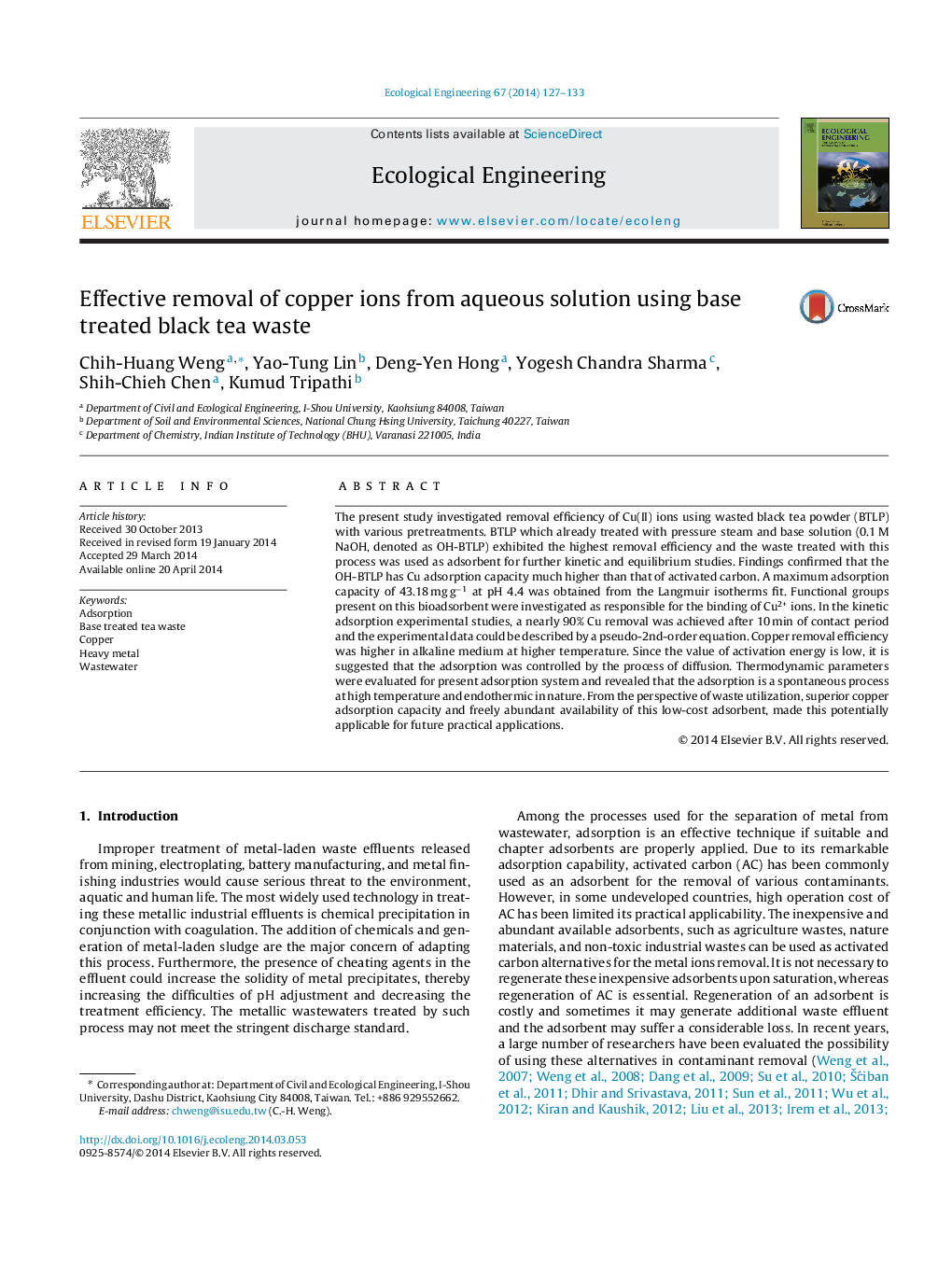| Article ID | Journal | Published Year | Pages | File Type |
|---|---|---|---|---|
| 4389422 | Ecological Engineering | 2014 | 7 Pages |
•Base treated black tea waste (OH-BTLP) has an exceptional Cu adsorption capability.•Main functional groups of the tea waste participating in Cu binding were identified.•Adsorption process was governed by diffusion involving in physisorption mechanism.•Solution pH and temperature significantly affect the adsorption.
The present study investigated removal efficiency of Cu(II) ions using wasted black tea powder (BTLP) with various pretreatments. BTLP which already treated with pressure steam and base solution (0.1 M NaOH, denoted as OH-BTLP) exhibited the highest removal efficiency and the waste treated with this process was used as adsorbent for further kinetic and equilibrium studies. Findings confirmed that the OH-BTLP has Cu adsorption capacity much higher than that of activated carbon. A maximum adsorption capacity of 43.18 mg g−1 at pH 4.4 was obtained from the Langmuir isotherms fit. Functional groups present on this bioadsorbent were investigated as responsible for the binding of Cu2+ ions. In the kinetic adsorption experimental studies, a nearly 90% Cu removal was achieved after 10 min of contact period and the experimental data could be described by a pseudo-2nd-order equation. Copper removal efficiency was higher in alkaline medium at higher temperature. Since the value of activation energy is low, it is suggested that the adsorption was controlled by the process of diffusion. Thermodynamic parameters were evaluated for present adsorption system and revealed that the adsorption is a spontaneous process at high temperature and endothermic in nature. From the perspective of waste utilization, superior copper adsorption capacity and freely abundant availability of this low-cost adsorbent, made this potentially applicable for future practical applications.
Graphical abstractBlack tea waste treated with base solution (OH-BTLP) exhibited an exceptional Cu adsorption capability amongst the tested pretreatment methods. OH-BTLP has Cu adsorption capacity much higher than that of powdered activated carbon (PAC).Figure optionsDownload full-size imageDownload as PowerPoint slide
